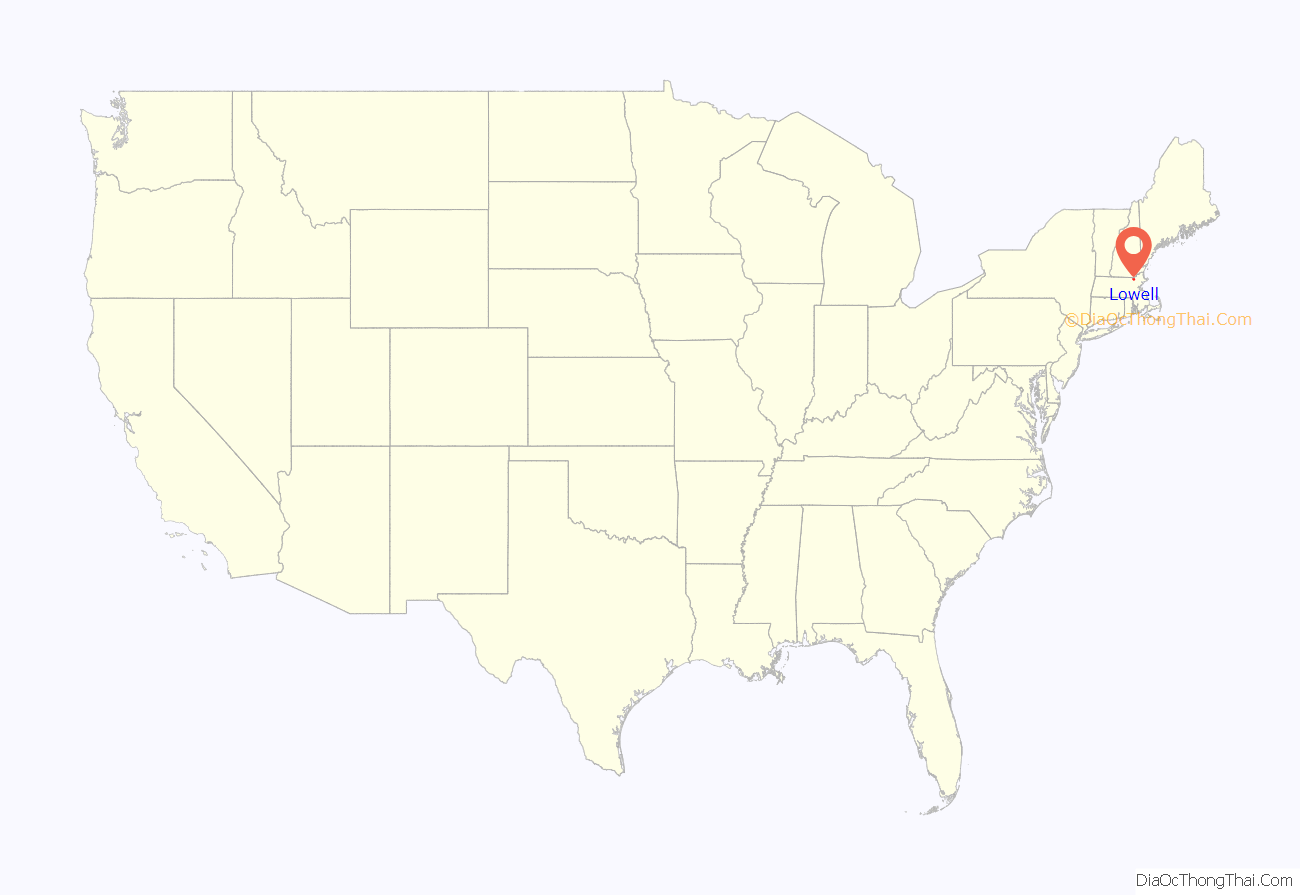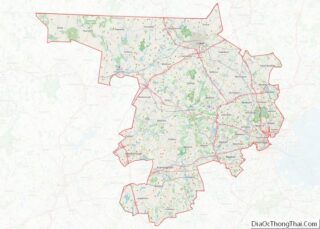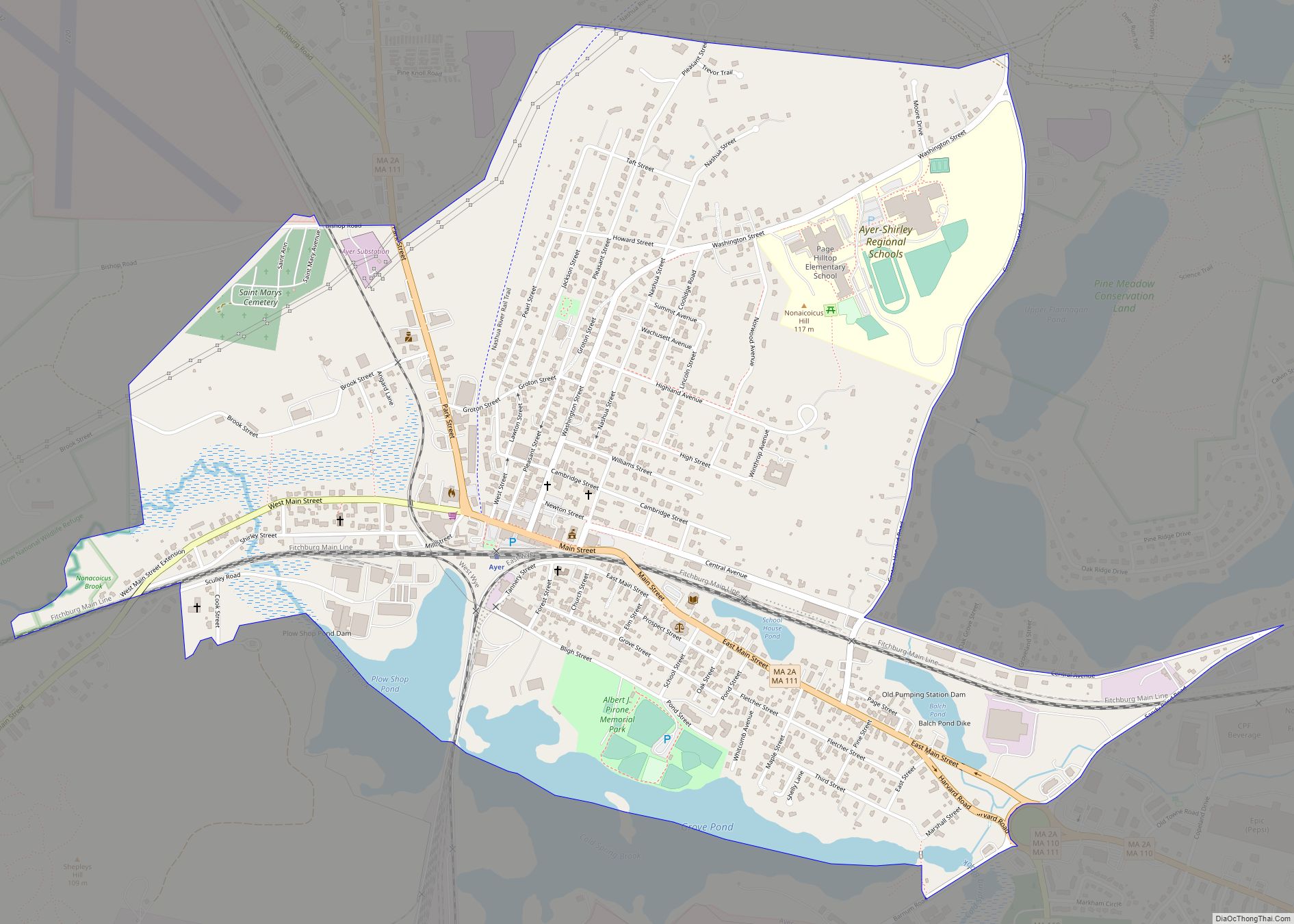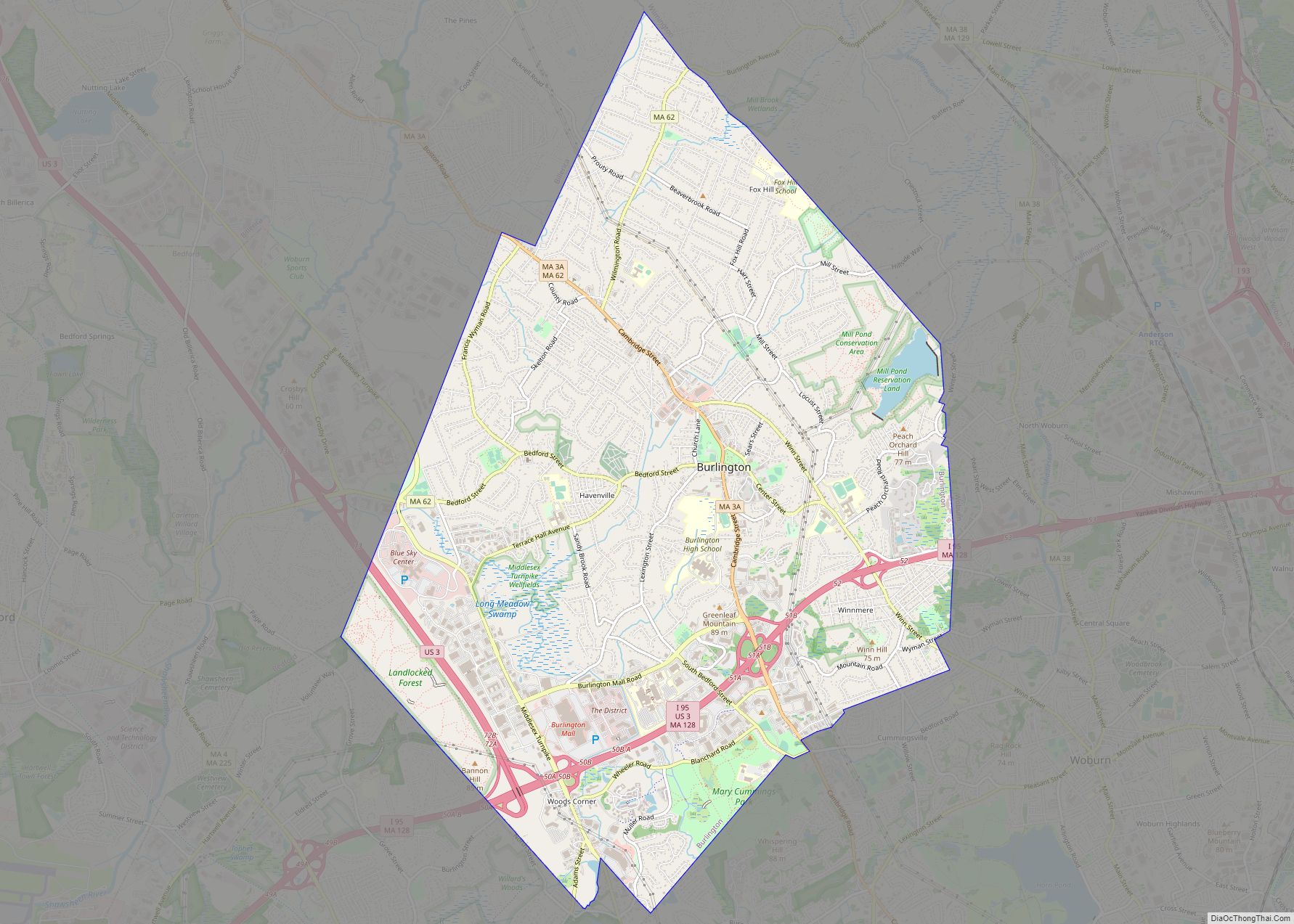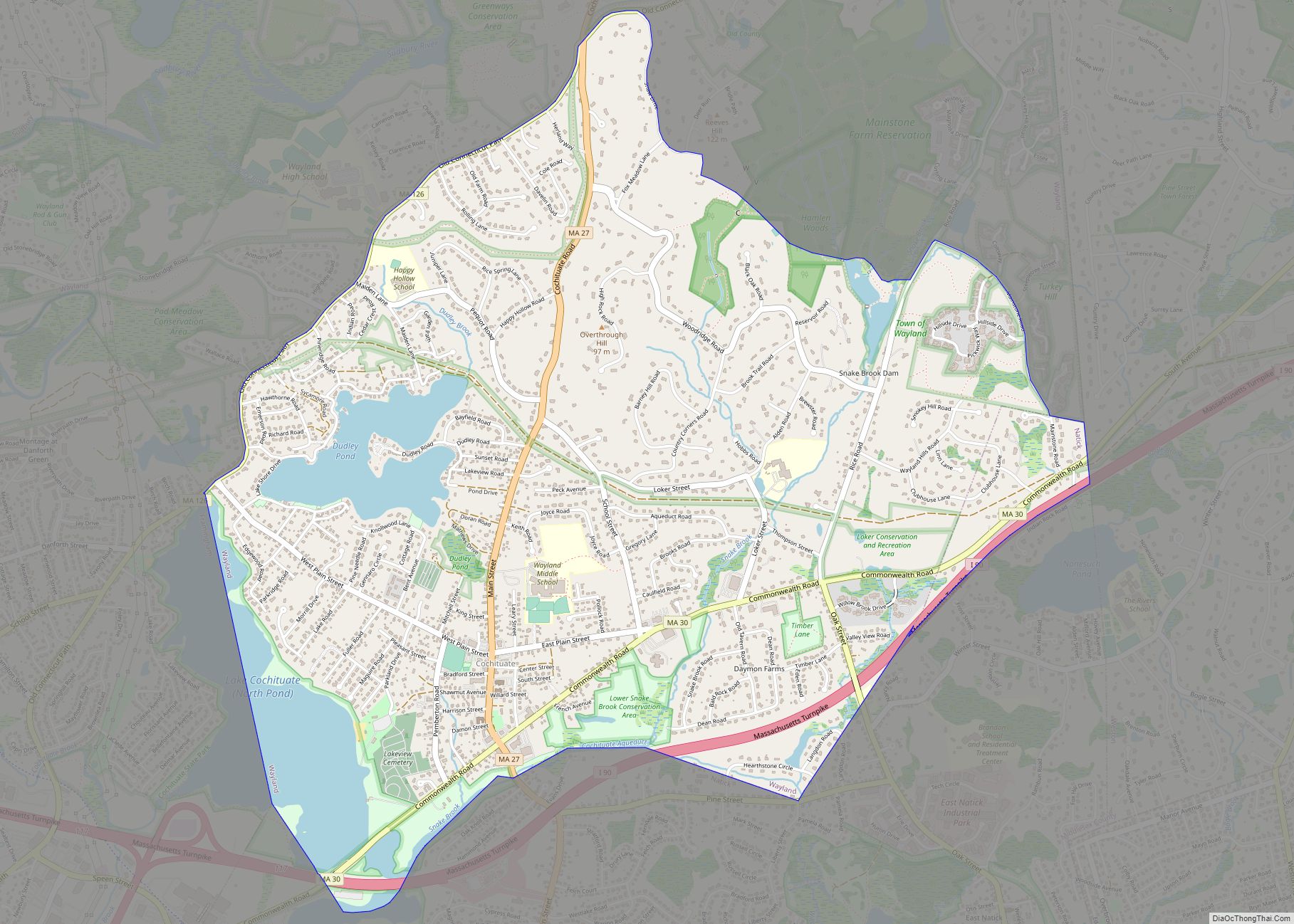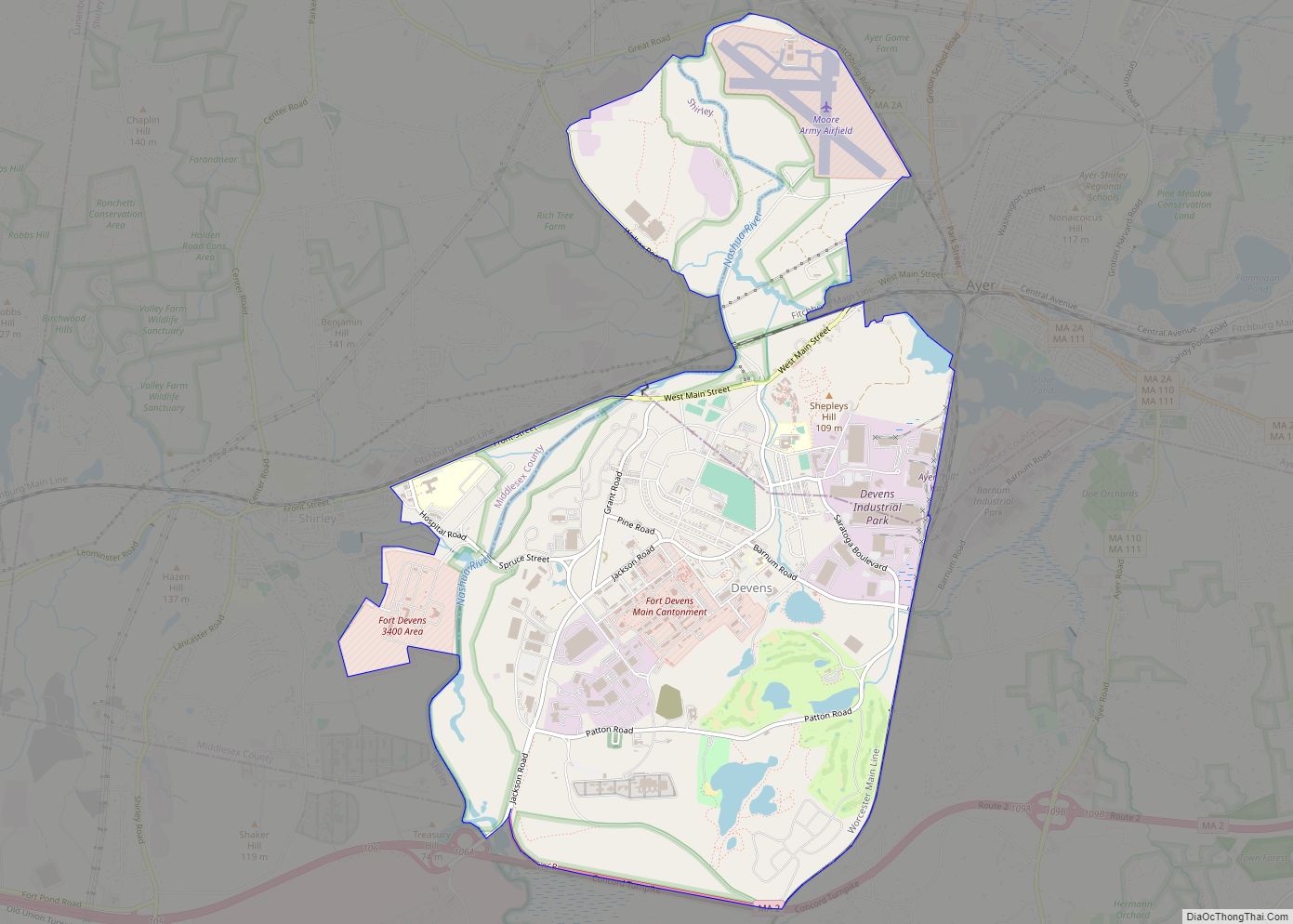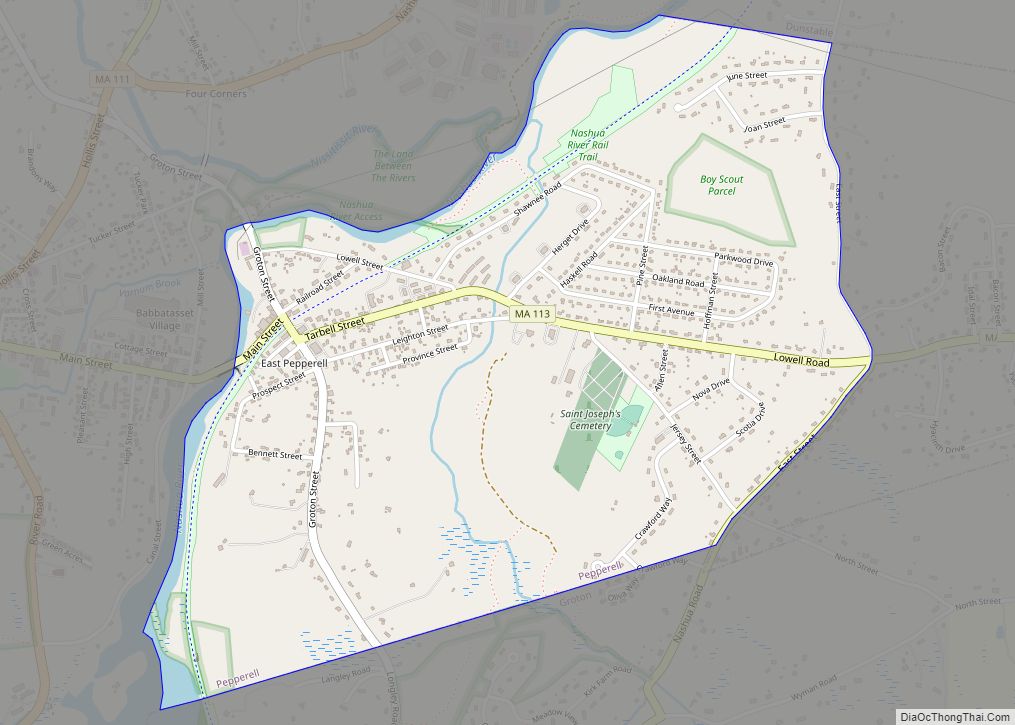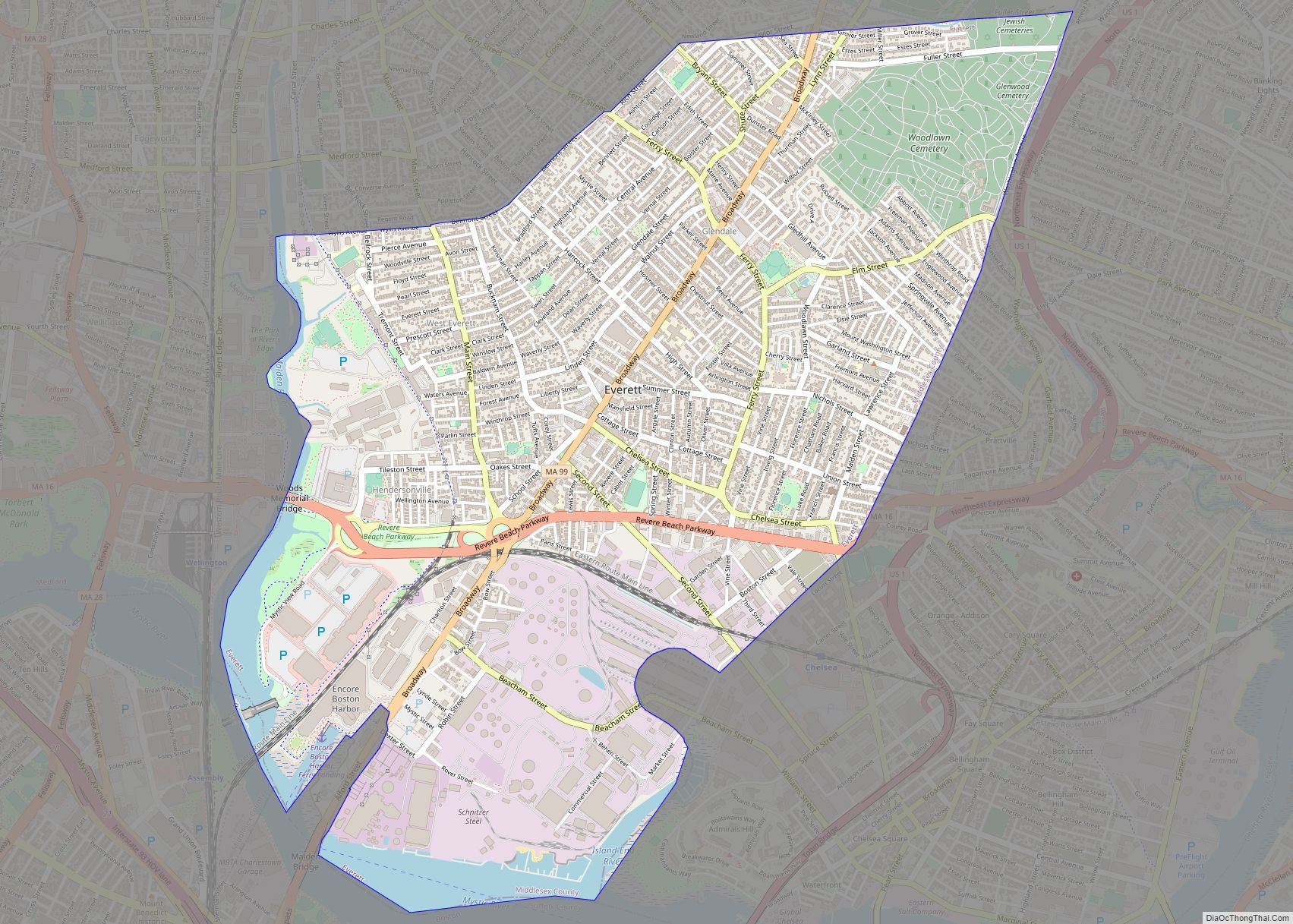Lowell (/ˈloʊəl/) is a city in Massachusetts, in the United States. Alongside Cambridge, It is one of two traditional seats of Middlesex County. With an estimated population of 115,554 in 2020, it was the fifth most populous city in Massachusetts as of the last census, and the third most populous in the Boston metropolitan statistical area. The city also is part of a smaller Massachusetts statistical area, called Greater Lowell, and of New England’s Merrimack Valley region.
Incorporated in 1826 to serve as a mill town, Lowell was named after Francis Cabot Lowell, a local figure in the Industrial Revolution. The city became known as the cradle of the American Industrial Revolution because of its textile mills and factories. Many of Lowell’s historic manufacturing sites were later preserved by the National Park Service to create Lowell National Historical Park. During the Cambodian genocide (1975–1979), the city took in an influx of refugees, leading to a Cambodia Town and America’s second largest Cambodian-American population.
Lowell is home to two institutions of higher education. UMass Lowell, part of the University of Massachusetts system, has three campuses in the city. Middlesex Community College’s two campuses are in Lowell and in the town of Bedford, Massachusetts. Arts facilities in the city include the Whistler House Museum of Art, the Merrimack Repertory Theatre, the Lowell Memorial Auditorium, and Sampas Pavilion. In sports, the city has a long tradition of boxing, hosting the annual New England Golden Gloves boxing tournament. The city has a baseball stadium, Edward A. LeLacheur Park, and a multipurpose indoor sports arena, the Tsongas Center, both of which have hosted collegiate and minor-league professional sports teams.
| Name: | Lowell city |
|---|---|
| LSAD Code: | 25 |
| LSAD Description: | city (suffix) |
| State: | Massachusetts |
| County: | Middlesex County |
| Incorporated: | 1826 |
| Elevation: | 102 ft (31 m) |
| Total Area: | 14.53 sq mi (37.63 km²) |
| Land Area: | 13.61 sq mi (35.25 km²) |
| Water Area: | 0.92 sq mi (2.38 km²) |
| Total Population: | 115,554 |
| Population Density: | 8,489.75/sq mi (3,278.02/km²) |
| ZIP code: | 01850, 01851, 01852, 01853, 01854 |
| Area code: | 978 / 351 |
| FIPS code: | 2537000 |
| GNISfeature ID: | 0611832 |
Online Interactive Map
Click on ![]() to view map in "full screen" mode.
to view map in "full screen" mode.
Lowell location map. Where is Lowell city?
History
Founded in the 1820s as a planned manufacturing center for textiles, Lowell is located along the rapids of the Merrimack River, 25 mi (40 km) northwest of Boston in what was once the farming community of East Chelmsford, Massachusetts. The so-called Boston Associates, including Nathan Appleton and Patrick Tracy Jackson of the Boston Manufacturing Company, named the new mill town after their visionary leader, Francis Cabot Lowell, who had died five years before its 1823 incorporation. As Lowell’s population grew, it acquired land from neighboring towns, and diversified into a full-fledged urban center. Many of the men who composed the labor force for constructing the canals and factories had immigrated from Ireland, escaping the poverty and Great Famine of the 1830s and 1840s. The mill workers, young single women called Mill Girls, generally came from the farm families of New England.
By the 1850s, Lowell had the largest industrial complex in the United States. The textile industry wove cotton produced in the Southern United States. In 1860, there were more cotton spindles in Lowell than in all eleven states combined that would form the Confederate States of America. Many of the coarse cottons produced in Lowell eventually returned to the South to clothe enslaved people, and, according to historian Sven Beckert, “‘Lowell’ became the generic term slaves used to describe coarse cottons.” The city continued to thrive as a major industrial center during the 19th century, attracting more migrant workers and immigrants to its mills. Next were the Catholic Germans, followed by a large influx of French Canadians during the 1870s and 1880s. Later waves of immigrants came to work in Lowell and settled in ethnic neighborhoods, with the city’s population reaching almost 50% foreign-born by 1900. By the time World War I broke out in Europe, the city had reached its economic peak.
The Mill Cities’ manufacturing base declined as companies began to relocate to the South in the 1920s. The city fell into hard times, and was even referred to as a “depressed industrial desert” by Harper’s Magazine in 1931, as the Great Depression worsened. At this time, more than one third of its population was “on relief” (government assistance), as only three of its major textile corporations remained active. Several years later, the mills were reactivated, making parachutes and other military necessities for World War II. However, this economic boost was short-lived and the post-war years saw the last textile plants close.
Zoning, development and the Massachusetts Miracle
In the 1970s, Lowell became part of the Massachusetts Miracle, being the headquarters of Wang Laboratories. At the same time, Lowell became home to thousands of new immigrants, many from Cambodia, following the genocide at the hands of the Khmer Rouge. The city continued to rebound, but this time, focusing more on culture. The former mill district along the river was partially restored and became part of the Lowell National Historical Park, founded in the late 1970s.
Although Wang went bankrupt in 1992, the city continued its cultural focus by hosting the nation’s largest free folk festival, the Lowell Folk Festival, as well as many other cultural events. This effort began to attract other companies and families back to the urban center. Additional historic manufacturing and commercial buildings were adapted as residential units and office space. By the 1990s, Lowell had built a new ballpark and arena, which became home to two minor league sports teams, the Lowell Devils and Lowell Spinners. The city also began to have a larger student population. The University of Massachusetts Lowell and Middlesex Community College expanded their programs and enrollment. During the period of time when Lowell was part of the Massachusetts Miracle, the Lowell City Development Authority created a Comprehensive Master Plan which included recommendations for zoning adaptations within the city. The city’s original zoning code was adopted in 1926 and was significantly revised in 1966 and 2004, with changes included to respond to concerns about overdevelopment.
In 2002, in lieu of updating the Comprehensive Master Plan, more broad changes were recommended so that the land use and development would be consistent with the current master plan. The most significant revision to the 1966 zoning code is the adoption of an inclusion of a transect-based zoning code and some aspects of a form-based code style of zoning that emphasizes urban design elements as a means to ensure that infill development will respect the character of the neighborhood or district in question. By 2004, the recommended zoning changes were unanimously adopted by the City Council and despite numerous changes to the 2004 Zoning Code, it remains the basic framework for resolving zoning issues in Lowell to this day.
The Hamilton Canal District (HCD) is the first district in Lowell in which regulation and development is defined by Form-Based Code (HCD-FBC) and legislated by its own guiding framework consistent to the HCD Master Plan. The HCD is a major redevelopment project that comprises 13-acres of vacant, underutilized land in downtown Lowell abutting former industrial mills. Trinity Financial was elected as the Master Developer to recreate this district with a vision of making a mixed-use neighborhood. Development plans included establishing the HCD as a gateway to downtown Lowell and enhanced connectivity to Gallagher Terminal.
Anti-crime efforts
In the 1990s, Lowell had been locally notorious for being a place of high drug trafficking and gang activity, and was the setting for a real life documentary, High on Crack Street: Lost Lives in Lowell. In the years from 1994 to 1999, crime dropped 50 percent, the highest rate of decrease for any city in America with over 100,000 residents.
Within one generation, by 2009, Lowell was ranked as the 139th most dangerous city of over 75,000 residents in the United States, out of 393 communities. Out of Massachusetts cities, nine are larger than 75,000 residents, and Lowell was fifth. For comparison Lowell was still rated safer than Boston (104 of 393), Providence, RI (123), Springfield (51), Lynn (120), Fall River (103), and New Bedford (85), but rated more dangerous than Cambridge (303), Newton (388), Quincy (312), and Worcester (175).
Lowell Road Map
Lowell city Satellite Map
Geography
Lowell is located at 42°38′22″N 71°18′53″W / 42.63944°N 71.31472°W / 42.63944; -71.31472 (42.639444, −71.314722). According to the United States Census Bureau, the city has a total area of 14.5 square miles (38 km) of which 13.8 square miles (36 km) is land and 0.8 square miles (2.1 km) (5.23%) is water.
Climate
Lowell features a four-season Humid continental climate, with long and very cold winters, which typically experience an average 56 in (1,400 mm) of snowfall, with the highest ever recorded seasonal snowfall being 120 in (3,000 mm) in the winter of 2014–2015. Summers are hot and humid, and of average length, with autumn and spring are brief transition periods between the two. On average, temperature in Lowell ranges from 64 to 84 °F (18 to 29 °C) in the summer months, and between 2 and 33 °F (−17 and 1 °C) in the winter months, with the yearly average being 49 °F (9 °C).
Physical
Lowell is located at the confluence of the Merrimack and Concord rivers. The Pawtucket Falls, a mile-long set of rapids with a total drop in elevation of 32 feet, ends where the two rivers meet. At the top of the falls is the Pawtucket Dam, designed to turn the upper Merrimack into a millpond, diverted through Lowell’s extensive canal system.
The Merrimack, which flows southerly from Franklin, New Hampshire to Lowell, makes a northeasterly turn there before emptying into the Atlantic Ocean at Newburyport, Massachusetts, approximately 40 mi (64 km) downriver from Lowell. It is believed that in prior ages, the Merrimack continued south from Lowell to empty into the ocean somewhere near Boston. The glacial deposits that redirected the flow of the river left the drumlins that dot the city, most notably, Fort Hill in the Belvidere neighborhood. Other large hills in Lowell include Lynde Hill, also in Belvidere, and Christian Hill, in the easternmost part of Centralville at the Dracut town line.
The Concord, or Musketaquid (its original name), forms from the confluence of the Assabet and Sudbury rivers at Concord, Massachusetts. This river flows north into the city, and the area around the confluence with the Merrimack was known as Wamesit. Like the Merrimack, the Concord, although a much smaller river, has many waterfalls and rapids that served as power sources for early industrial purposes, some well before the founding of Lowell. Immediately after the Concord joins the Merrimack, the Merrimack descends another ten feet in Hunt’s Falls.
There is an ninety-degree bend in the Merrimack partway down the Pawtucket Falls. At this point, the river briefly widens and shallows. Here, Beaver Brook enters from the north, separating the city’s two northern neighborhoods, Pawtucketville and Centralville. Entering the Concord River from the southwest is River Meadow, or Hale’s Brook. This brook flows largely in a man-made channel, as the Lowell Connector was built along it. Both of these minor streams have limited industrial histories as well.
The bordering towns (clockwise from north) are Dracut, Tewksbury, Billerica, Chelmsford, and Tyngsborough. The border with Billerica is a point in the middle of the Concord River where Lowell and Billerica meet Tewksbury and Chelmsford.
The ten communities designated part of the Lowell Metropolitan area by the 2000 US Census are Billerica, Chelmsford, Dracut, Dunstable, Groton, Lowell, Pepperell, Tewksbury, Tyngsborough, and Westford, and Pelham, New Hampshire. See Greater Lowell.
Neighborhoods
Lowell has eight distinct neighborhoods: the Acre, Back Central, Belvidere, Centralville, Downtown, Highlands, Pawtucketville, and South Lowell. The city also has five ZIP codes: four are geographically distinct general ZIP codes, and one (01853) is for post-office boxes only.
The Centralville neighborhood, ZIP Code 01850, is the northeastern section of the city, north of the Merrimack River and east of Beaver Brook. Christian Hill is the section of Centralville east of Bridge Street.
The Highlands, ZIP Code 01851, is the most populated neighborhood, with almost a quarter of the city residing here. It is located in the southwestern section of the city, bordered to the east by the Lowell Connector and to the north by the railroad. Lowellians further distinguish the sections of the Highlands as the Upper Highlands and the Lower Highlands, the latter being the area closer to downtown. Middlesex Village, Tyler Park, and Drum Hill are in this ZIP Code. The Upper Highlands also includes the University of Massachusetts Lowell, South Campus (Fine Arts, Humanities, Social Sciences, Health Sciences & Education).
Downtown, Belvidere, Back Central, and South Lowell make up the 01852 ZIP Code, and are the southeastern sections of the city (south of the Merrimack River and southeast of the Lowell Connector). Belvidere is the mostly residential area south of the Merrimack River, east of the Concord River, and north of the Lowell and Lawrence railroad. Belvidere Hill Historic District runs along Fairmount Street. Lower Belvidere is the section west of Nesmith Street. Rogers Fort Hill Park Historic District, Lowell Cemetery, and Shedd Park are this side of town. Back Central is an urban area south of downtown, toward the mouth of River Meadow Brook. South Lowell is the area south of the railroad and east of the Concord River. Other minor neighborhoods within this ZIP Code are Ayers City, Bleachery, Chapel Hill, the Grove, Oaklands, Riverside Park, Swede Village, and Wigginville. Although the use of the names of these smaller neighborhoods has been in decline in the past decades, there has been recently a reemergence of their use. Downtown Lowell includes the UMass Lowell East Campus which consists of university housing, recreation facilities, research and the university’s sports arena, as well as the Middlesex Community College.
Pawtucketville, the University of Massachusetts Lowell, North Campus; and the Acre make up the 01854 ZIP Code. The northwestern portion of the city includes the neighborhood where Jack Kerouac resided around the area of University Avenue (previously known as Moody Street). The North Campus of UMass Lowell (Colleges of Engineering, Sciences and Business) is in Pawtucketville near the Lowell General Hospital. The older parts of the neighborhood are around University Avenue and Mammoth Road, whereas the newer parts are around Varnum Avenue. Pawtucketville is the official entrance to the Lowell-Dracut-Tyngsborough State Forest, the site of an historic Native American tribe, and in the age of the Industrial Revolution was a prominent source of granite used in canals and factory foundations.
See also
Map of Massachusetts State and its subdivision: Map of other states:- Alabama
- Alaska
- Arizona
- Arkansas
- California
- Colorado
- Connecticut
- Delaware
- District of Columbia
- Florida
- Georgia
- Hawaii
- Idaho
- Illinois
- Indiana
- Iowa
- Kansas
- Kentucky
- Louisiana
- Maine
- Maryland
- Massachusetts
- Michigan
- Minnesota
- Mississippi
- Missouri
- Montana
- Nebraska
- Nevada
- New Hampshire
- New Jersey
- New Mexico
- New York
- North Carolina
- North Dakota
- Ohio
- Oklahoma
- Oregon
- Pennsylvania
- Rhode Island
- South Carolina
- South Dakota
- Tennessee
- Texas
- Utah
- Vermont
- Virginia
- Washington
- West Virginia
- Wisconsin
- Wyoming
